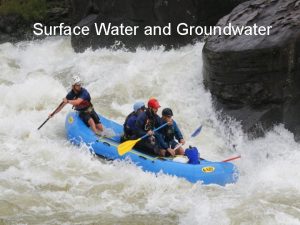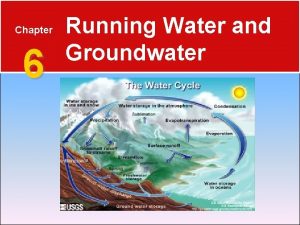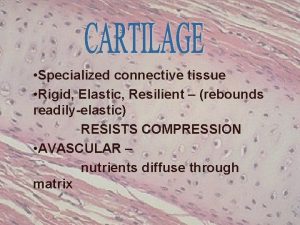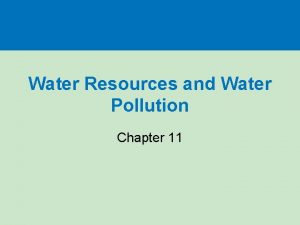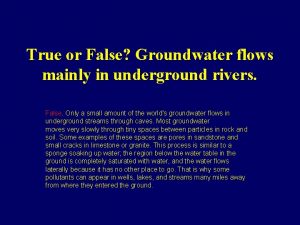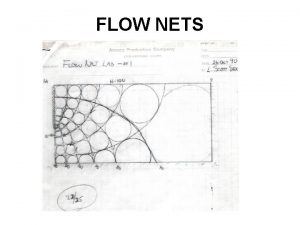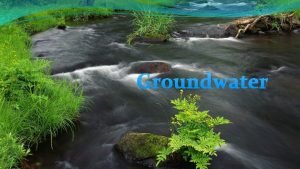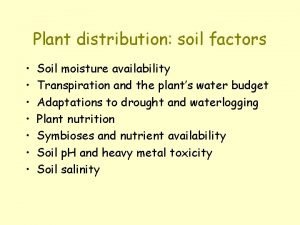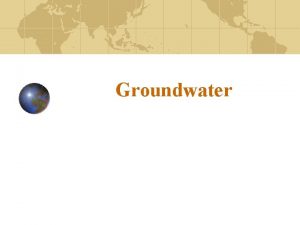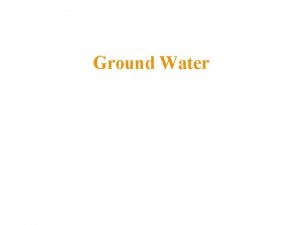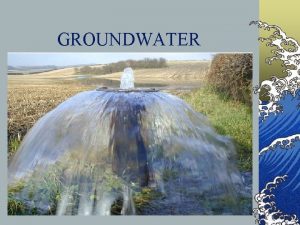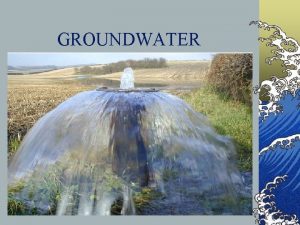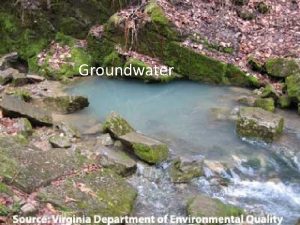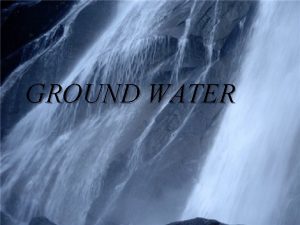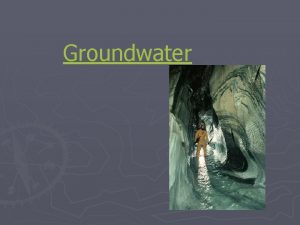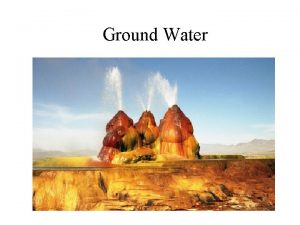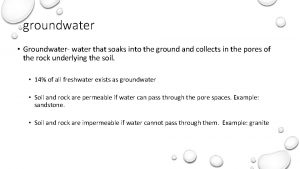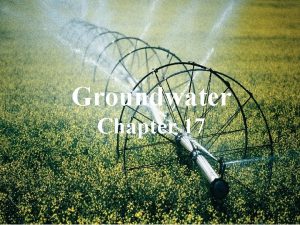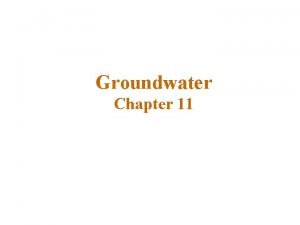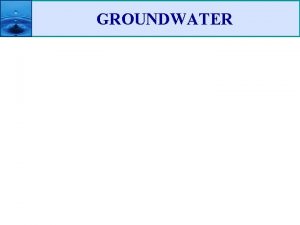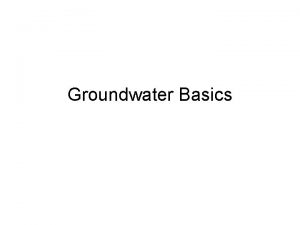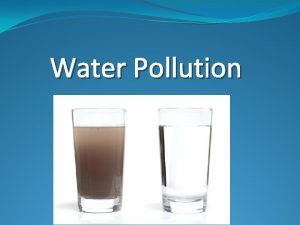Ground water Groundwater is water that is found































- Slides: 31

Ground water

• Groundwater is water that is found underground in the cracks and spaces in soil, sand rock. Groundwater is stored in--and moves slowly through--layers of soil, sand rocks called aquifers. Aquifers typically consist of gravel, sandstone, or fractured rock, like limestone. These materials are permeable because they have large connected spaces that allow water to flow through. The speed at which groundwater flows depends on the size of the spaces in the soil or rock and how well the spaces are connected.


• Karst Topography - In an area where the main type of weathering is dissolution (like in limestone terrains), the formation of caves and sinkholes, and their collapse and coalescence may result in a highly irregular topography called karst topography

Karst topography

The Water Table • Rain that falls on the surface seeps down through the soil and into a zone called the zone of aeration or unsaturated zone where most of the pore spaces are filled with air. As it penetrates deeper it eventually enters a zone where all pore spaces and fractures are filled with water. This zone is called the saturated zone. The surface below which all openings in the rock are filled with water (the top of the saturated zone) is called the water table.


Caves and Caverns • - If large areas of limestone underground • are dissolved by the action of groundwater these cavities • can become caves or caverns (caves with many • interconnected chambers) once the water table is lowered.

• Sinkholes - If the roof of a cave or cavern collapses, this results in a sinkhole. Sinkholes, likes caves, are common in areas underlain by limestones. For example, in Florida, which is underlain by limestones, a new sinkhole forms about once each year, gobbling up cars and houses in process.

Sinkholes Are most commonly thought of as physical depressions or holes in the surface of the land. Not all sinkholes, however, are as visible or dramatic as a home or roadway falling into the ground. Many times, sinkhole activity never manifests itself on the surface of the land, making it harder to detect.


Caves and Caverns

A cave is a large hole. It may be underground, in the side of a hill or mountain, or under a cliff.

A cave is an underground hollow or passage that is formed when water runs through an area with enough force to dissolve or wear away rock.

A cavern is a large cave. Over many years as the water evaporates and simply drips, it leaves tiny deposits of calcium carbonate (calcite). These drops form rock sculptures that look like icicles called stalactites and stalagmites. Stalactites hang from the ceiling and stalagmites form from the ground up. To remember the difference, stalactites have a 'c' in the word for 'ceiling' and stalagmites have a 'g' for 'ground. ' If they come together in the center, they become columns.

STALACTITES • Stalactites form when water drips from the ceiling year after year. • Minerals are deposited as the water evaporates


Mineral crystals grow larger over time

Stalagmites, some of the most familiar cave formations, are best known as upward-growing, massive calcite mounds deposited from drip water.

Sometimes stalactites and stalagmites grow together to form columns

COLUMNS




Other ground water features



HOT SPRINGS

GEYSERS

SPRINGS

 Running water and groundwater
Running water and groundwater Water erosion and deposition
Water erosion and deposition Chapter 6 running water and groundwater
Chapter 6 running water and groundwater How does groundwater rejoin the water cycle
How does groundwater rejoin the water cycle Phân độ lown ngoại tâm thu
Phân độ lown ngoại tâm thu Block xoang nhĩ ecg
Block xoang nhĩ ecg Thơ thất ngôn tứ tuyệt đường luật
Thơ thất ngôn tứ tuyệt đường luật Thơ thất ngôn tứ tuyệt đường luật
Thơ thất ngôn tứ tuyệt đường luật Chiến lược kinh doanh quốc tế của walmart
Chiến lược kinh doanh quốc tế của walmart Tìm độ lớn thật của tam giác abc
Tìm độ lớn thật của tam giác abc Con hãy đưa tay khi thấy người vấp ngã
Con hãy đưa tay khi thấy người vấp ngã Tôn thất thuyết là ai
Tôn thất thuyết là ai Gây tê cơ vuông thắt lưng
Gây tê cơ vuông thắt lưng Sau thất bại ở hồ điển triệt
Sau thất bại ở hồ điển triệt Rubbery ground matrix found in cartilage
Rubbery ground matrix found in cartilage Water and water and water water
Water and water and water water Zone of areation
Zone of areation How to help reduce water pollution
How to help reduce water pollution Most groundwater comes from rain true or false
Most groundwater comes from rain true or false Nj groundwater quality standards
Nj groundwater quality standards Gms groundwater
Gms groundwater Groundwater assessment methodology
Groundwater assessment methodology Groundwater label
Groundwater label Septic tank contamination groundwater
Septic tank contamination groundwater Groundwater flow net
Groundwater flow net The water cycle brainpop
The water cycle brainpop Rajiv gandhi groundwater raipur
Rajiv gandhi groundwater raipur Bernoulli equation groundwater
Bernoulli equation groundwater Permeability in rocks
Permeability in rocks Arc hydro groundwater
Arc hydro groundwater Hydrosphere
Hydrosphere Lenticels
Lenticels
